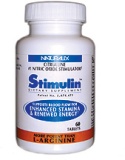Amino acids, the basic components of proteins, have long represented the most economical and efficient means for adapting the protein composition of the diets of animals bred for productive purposes to the increasing needs dictated by genetic improvement and the qualitative demands of the market for products of animal origin. Consequently, amino acids, particularly lysine and methionine, are commonly provided to animals in variable amounts according to the amino acid composition of the base feed and of the required nutritional objectives.
Amino acids of industrial origin come from chemical synthesis or fermentation processes, and are available to the animal feed industry either in powder or liquid form, chemically formulated either as natural-like amino acids or as various chemical derivatives, which are then metabolized by the animal in biologically active amino acids.
A "common" amino acid is a L-amino acid selected from the group consisting of glycine, leucine, isoleucine, valine, alanine, phenylalanine, tyrosine, tryptophan, aspartate, asparagine, glutamate, glutamine, cysteine, methionine, arginine, lysine, proline, serine, threonine and histidine. An "uncommon" amino acid includes one selected from the group consisting of D-amino acids, homo-amino acids, N-alkyl amino acids, dehydroamino acids, aromatic amino acids (other than phenylalanine, tyrosine and tryptophan), ortho-, meta- or para-aminobenzoic acid, ornithine, citrulline, norleucine, .quadrature.-glutamic acid, aminobutyric acid (Abu), and .alpha.-.alpha. disubstituted amino acids.
Citrulline is made from ornithine and carbamoyl phosphate in one of the central reactions in the urea cycle. It is also produced from arginine as a by-product of the reaction catalyzed by NOS family. Arginine is first oxidized into N-hydroxyl-arginine, which is then further oxidized to citrulline concomitant with release of nitric oxide. When starved for arginine, organisms will convert ornithine to citrulline, which in turn gives arginine. L-citrulline is also viewed a nonessential amino acid in humans for nitrogen balance and metabolic purposes without supplemental supply of L-citrulline. This amino acid is not a component of most proteins within the human body except for some specialized proteins in cells in the epidermis, hair, and in myelin.
Although citrulline is not coded for by DNA directly, several proteins are known to contain citrulline as a result of a posttranslational modification. These citrulline residues are generated by a family of enzymes called peptidylarginine deiminases (PADs), which convert arginine into citrulline in a process called citrullination or deimination. Proteins that normally contain citrulline residues include myelin basic protein (MBP), filaggrin, and several histone proteins, whereas other proteins, such as fibrin and vimentin are susceptible to citrullination during cell death and tissue inflammation.
Patients with rheumatoid arthritis often (at least 80% of them) develop an immune response against proteins containing citrulline. Although the origin of this immune response is not known, detection of antibodies reactive with citrulline containing proteins or peptides is now becoming an important help in the diagnosis of rheumatoid arthritis. |
